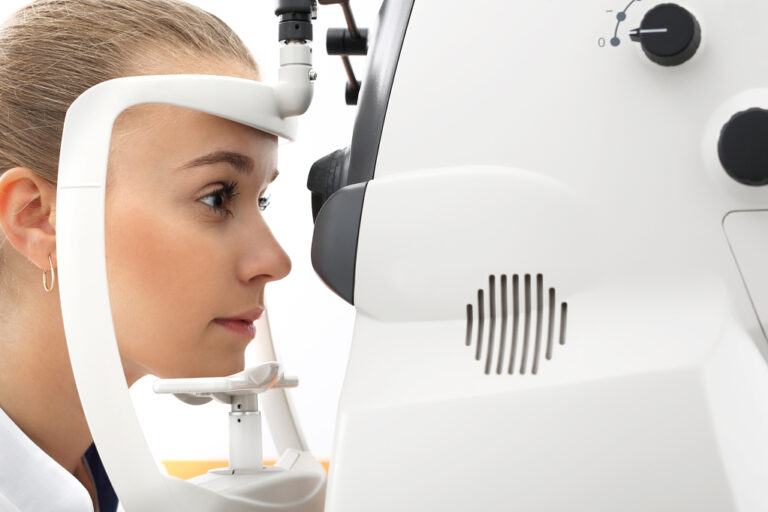Glaucoma is a group of eye diseases that ultimately result in damage to the optic nerve. It can be present in one or both eyes. In the early stages of the disease, there may be no symptoms. Vision is unchanged and there is no pain.
Glaucomas are classified according to onset (childhood vs. adult), etiology (primary vs. secondary) and underlying mechanism (open vs. closed angle). Surgery can help lower pressure when medication is not sufficient. However, it cannot reverse vision loss.
Surgery involves either laser treatment or making a cut in the eye to reduce the intraocular pressure. The type of surgery your doctor recommends will depend on the type and severity of your glaucoma and the general health of your eye.
Click the image below to learn more about glaucoma surgery options.

Doctors often recommend laser surgery before filtering microsurgery, unless the eye pressure is very high or the optic nerve is badly damaged. During laser surgery, a focused beam of light is used to treat the eye’s drainage system.This helps increase the flow of fluid out of the eye.
When laser surgery does not successfully lower eye pressure, or the pressure begins to rise again, the doctor may recommend conventional surgery or filtering microsurgery which involves creating a drainage hole with the use of a small surgical tool.
Inside the eye, a watery fluid is continually produced. This fluid helps to maintain the shape as well as the pressure of the eyeball. The pressure within the eye is called intraocular pressure or IOP. It is the result of the equilibrium between the fluid produced and output from the eye’s drainage system. Your IOP can vary at different times of the day, but it normally stays within a range that the eye can handle.
In some people, the fluid pressure within the eye is too high. This can lead to damage and death of the sensitive nerve fibers. As this occurs, the optic nerve is pushed into a curved shape.The optic nerve is critical to sight because it transmits visual information from the retina to the brain. If the pressure remains too high for too long, the extra pressure may result in vision loss.
Elevated IOP is clearly a risk factor for glaucoma, but we now know that even people with “normal” levels of pressure can experience vision loss from glaucoma. Other factors such as disturbances of blood flow in the optic nerve head as well as intraocular chemicals may interact with IOP to affect the optic nerve.
In about one third of cases, there is statistically “normal” IOP. There is no set threshold for intraocular pressure that causes glaucoma. One person may develop nerve damage at a relatively low pressure, while another person may have high eye pressures for years and yet never experience the same level of damage.
For more than 54 years, Florida Eye Associates has been treating glaucoma and other diseases of the eyes. Call 321-727-2020 to schedule an evaluation and to learn what treatment options might be best for you.








502 E New Haven Ave
Melbourne, FL 32901
Phone: 321-727-2020
Hours:
8:00 am – 4:30 pm – Monday – Friday
8:00 am – 11:00 am – Saturday
161 Malabar Road NE
Palm Bay, Florida 32907
Phone: (321) 727-2020
Fax: (321) 726-4061
Hours:
8:00 am – 4:30 pm – Monday – Friday
5510 Murrell Road
Melbourne, Florida 32940
Phone: (321) 727-2020
Fax: (321) 726-4061
Hours:
8:00 am – 4:30 pm – Monday – Friday
2003 N. Atlantic Avenue
Cocoa Beach, Florida 32931
Phone: (321) 727-2020
Fax: (321) 726-4061
Hours:
8:00 am – 4:30 pm – Monday – Friday
509 East New Haven Avenue
Melbourne, Florida 32901
Phone: (321) 727-2020
Fax: (321) 726-4061
Hours:
8:00 am – 4:30 pm – Monday – Friday
719 E. New Haven Ave.
Melbourne, Florida 32901
Phone: 321-984-4405
Open:
Monday – Friday
© 2025 Florida Eye Associates.